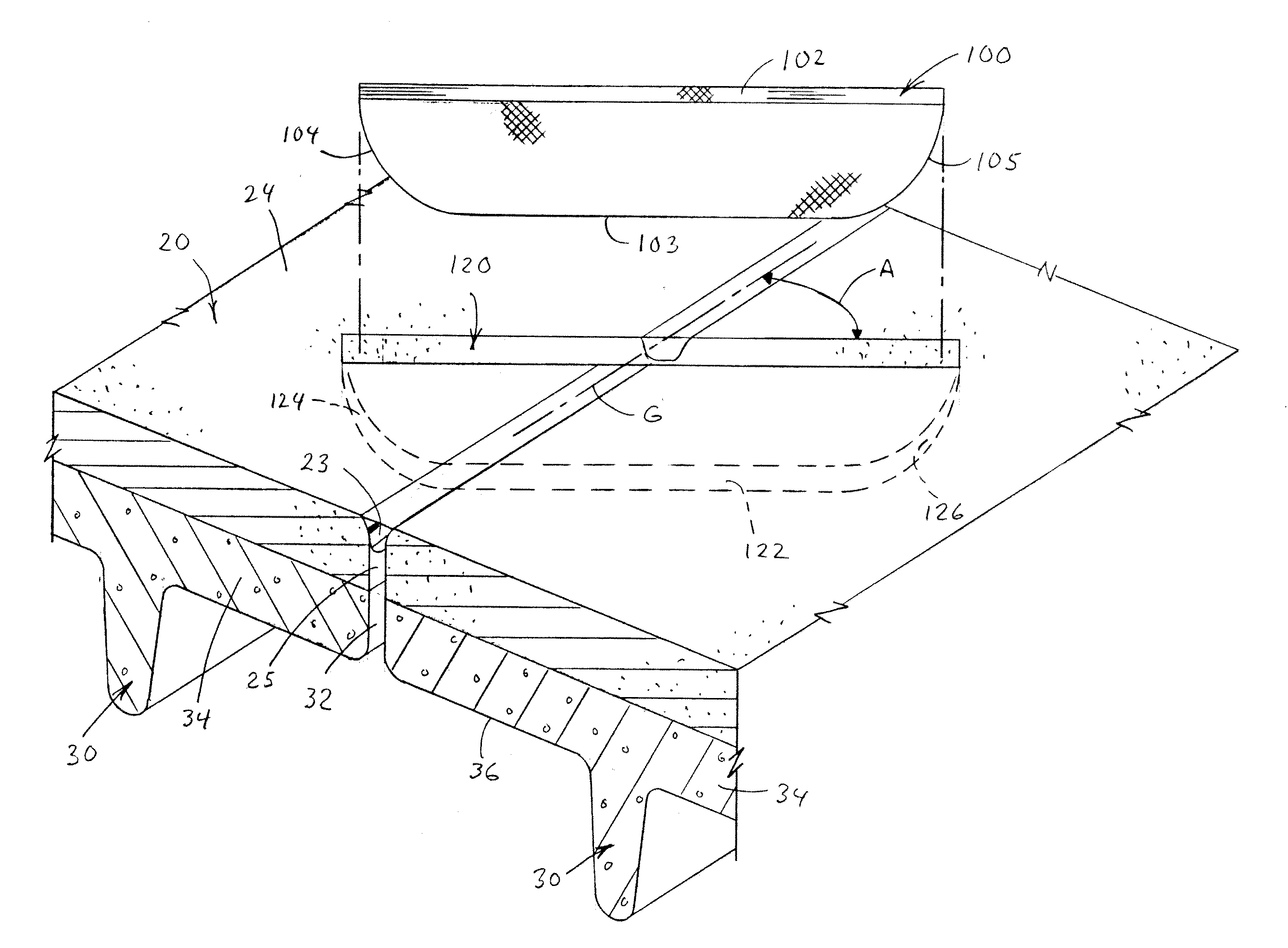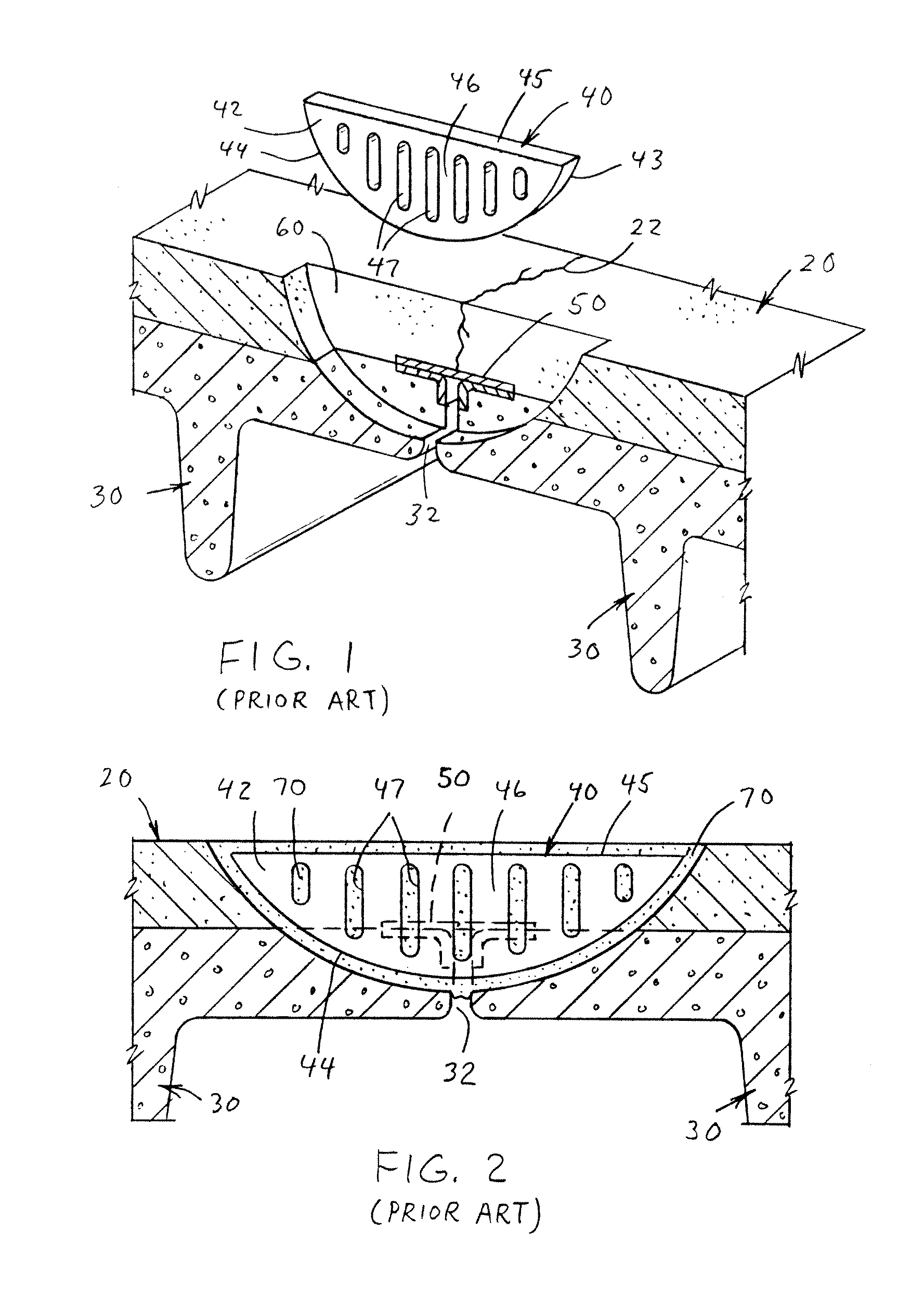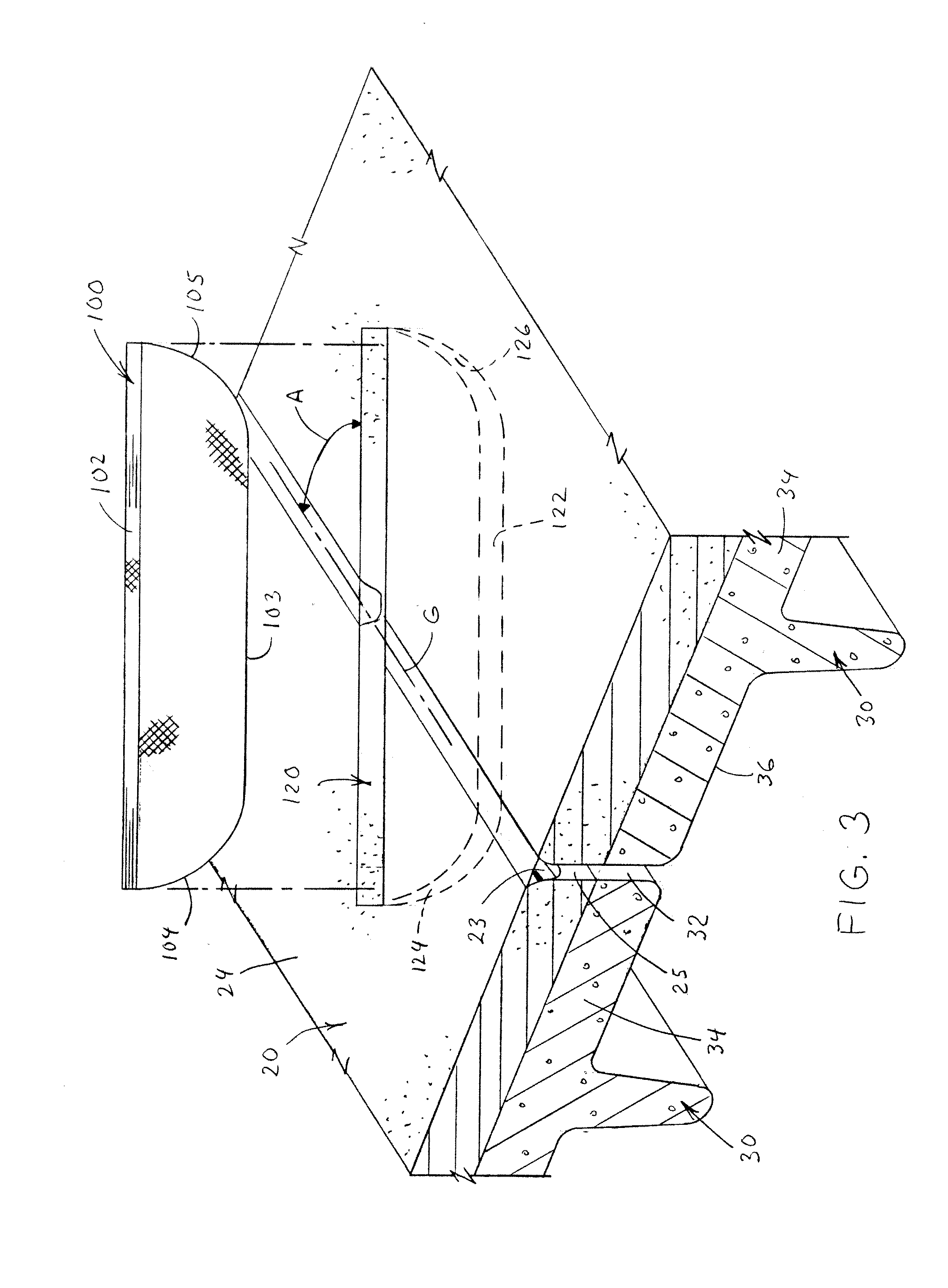Method and apparatus for repairing concrete
a concrete and repair method technology, applied in the field of concrete repair methods and equipment, can solve the problems of cracks that can develop in concrete structures, failure of structures, propagation of cracks in the joints between old and new concrete, etc., and achieve the effect of simple implementation and less cos
- Summary
- Abstract
- Description
- Claims
- Application Information
AI Technical Summary
Benefits of technology
Problems solved by technology
Method used
Image
Examples
Embodiment Construction
[0046]Referring now to the drawings wherein the showings are for the purpose of illustrating preferred embodiments of the invention only and not for the purpose of limiting same, FIGS. 1 and 2 illustrate a typical concrete deck 20 that is disposed above concrete T-shaped planks 30. A prior art concrete insert 40 as disclosed in U.S. Pat. No. 6,312,541 is illustrated as forming a repair to the damaged concrete deck. The concrete deck is also illustrated as supported by metal clips 50 that join together the concrete T-shaped planks 30. The concrete insert 40 is designed to repair the metal clips 50 that have failed as a result of corrosion from moisture that has seeped into cracks 22 that have formed in concrete deck 20. The concrete insert 40 is illustrated as a relatively thin, elongated oblong-shaped structure having first and second major surfaces 42 and 43, a flat top 45 and an arcuate side or edge 44. Edge 44 is curved. The peripheral shape of edge 44 at least approximates the s...
PUM
| Property | Measurement | Unit |
|---|---|---|
| angle | aaaaa | aaaaa |
| angle | aaaaa | aaaaa |
| angle | aaaaa | aaaaa |
Abstract
Description
Claims
Application Information
 Login to View More
Login to View More - R&D
- Intellectual Property
- Life Sciences
- Materials
- Tech Scout
- Unparalleled Data Quality
- Higher Quality Content
- 60% Fewer Hallucinations
Browse by: Latest US Patents, China's latest patents, Technical Efficacy Thesaurus, Application Domain, Technology Topic, Popular Technical Reports.
© 2025 PatSnap. All rights reserved.Legal|Privacy policy|Modern Slavery Act Transparency Statement|Sitemap|About US| Contact US: help@patsnap.com



